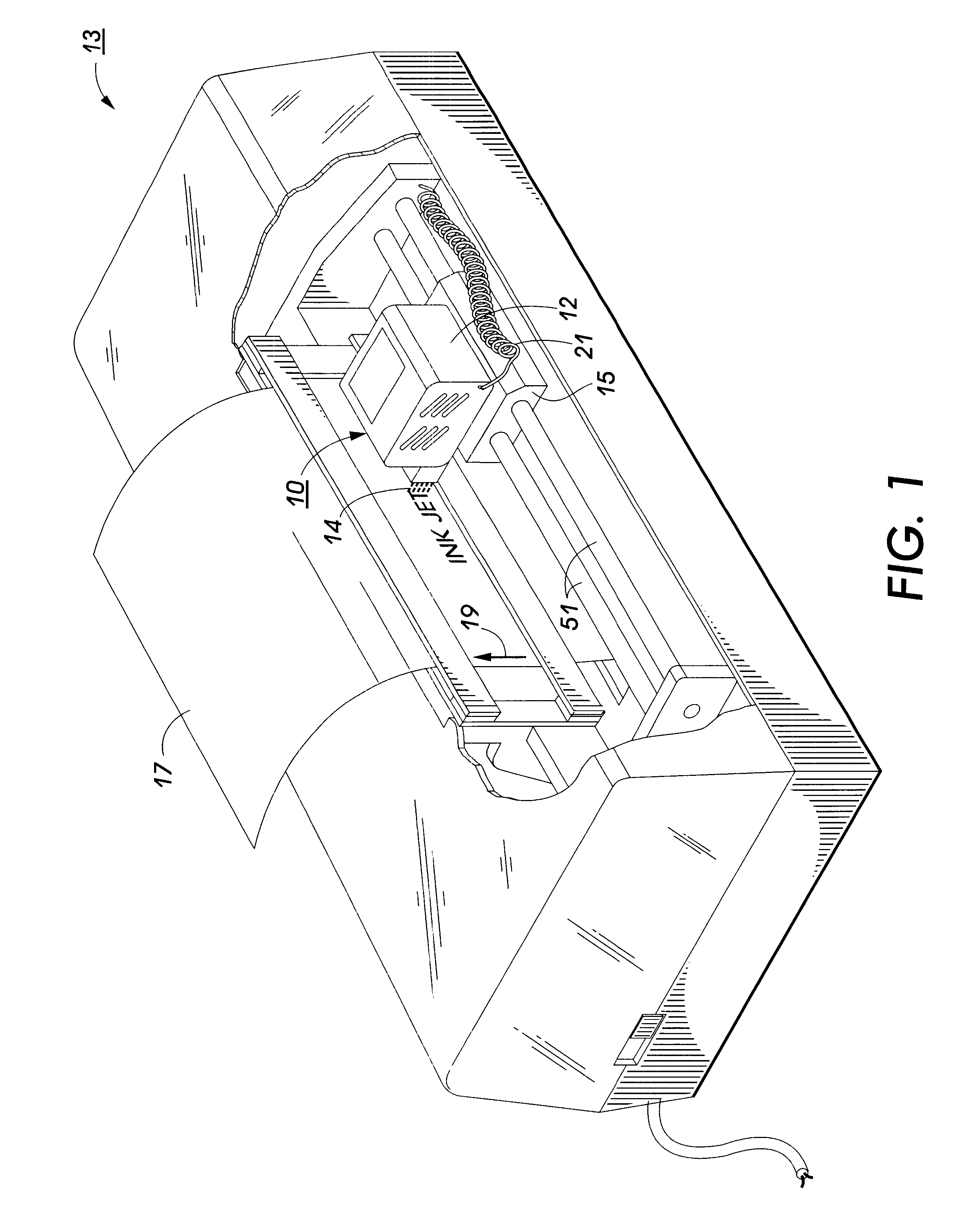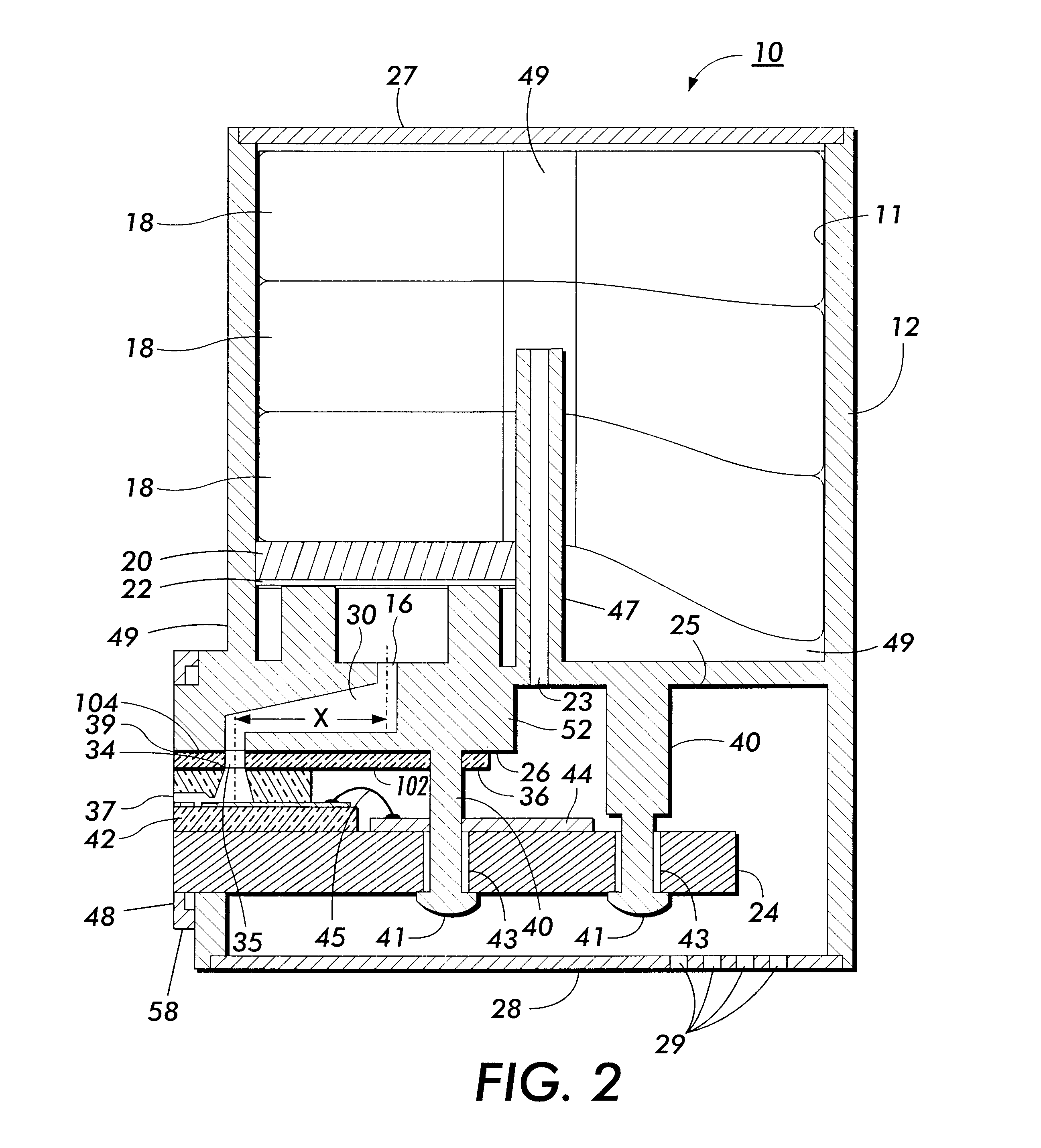Systems and methods for controlling depths of a laser cut
a laser cutting and laser cutting technology, applied in laser beam welding apparatus, manufacturing tools, welding/soldering/cutting articles, etc., can solve the problems of affecting the performance of the adhesive, affecting the quality of the adhesive, and not meeting the dimensional tolerances or jamming of the die cutting tool
- Summary
- Abstract
- Description
- Claims
- Application Information
AI Technical Summary
Benefits of technology
Problems solved by technology
Method used
Image
Examples
example
The sheet stock 100 of FIG. 5 includes the release liner 101, the substrate 103 and the carrier strip 105 formed of a polymeric material, such as MYLAR.RTM.. The sheet stock 100 also includes the adhesive layers 102 and 104 formed of, for example, phenolic nitrile. The sheet stock 100 may be considered a single thickness of MYLAR.RTM. for purposes of the example. The thickness of the sheet stock 100 is about 15.5 mils, or about 390 .mu.m. A 150 W CO.sub.2 laser operating at 9.4 .mu.m is used to cut the fluid seal around the remaining peripheral region while leaving the carrier strip 105 intact and also to cut out the sprocket holes 57 for the transport. The kiss cut 106 is formed entirely through the release liner 101, the adhesive layer 102, the substrate 103, and the adhesive layer 104. The total depth of the kiss cut 106 through the adhesive layer 104 is about 12.5 mils, or about 320 .mu.m. The kiss cut 106 extends about one third of the way into the carrier strip 105, which is a...
PUM
| Property | Measurement | Unit |
|---|---|---|
| laser wavelength | aaaaa | aaaaa |
| distance | aaaaa | aaaaa |
| thickness | aaaaa | aaaaa |
Abstract
Description
Claims
Application Information
 Login to View More
Login to View More - R&D
- Intellectual Property
- Life Sciences
- Materials
- Tech Scout
- Unparalleled Data Quality
- Higher Quality Content
- 60% Fewer Hallucinations
Browse by: Latest US Patents, China's latest patents, Technical Efficacy Thesaurus, Application Domain, Technology Topic, Popular Technical Reports.
© 2025 PatSnap. All rights reserved.Legal|Privacy policy|Modern Slavery Act Transparency Statement|Sitemap|About US| Contact US: help@patsnap.com



